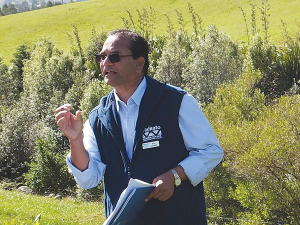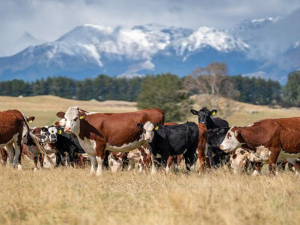Climate change affects all of us and reducing greenhouse gas emissions must be a priority, writes Bala Tikkisetty.
Carbon dioxide (CO2), methane (CH4) and nitrous oxide (N2O) are the three main greenhouse gases, affecting the climate by warming the planet.
Carbon dioxide and nitrous oxide are considered long lived gases, remaining in the atmosphere for centuries. Carbon dioxide causes sustained warming for thousands of years.
Methane is a relatively short-lived gas that breaks down within a few decades. However, once emitted into the atmosphere it causes a lingering warming effect for a long time after the methane itself has gone. One tonne of biological methane traps approximately 33 times more heat than a tonne of carbon dioxide over a 100-year period.
Globally, agriculture is the largest source of anthropogenic nitrous oxide emissions, accounting for between 56% and 81% of the total. In New Zealand, agriculture accounts for an estimated 94% of the anthropogenic nitrous oxide emissions.
Each molecule of nitrous oxide is about 300 times more powerful than one molecule of carbon dioxide in terms of greenhouse potentiality. Nitrous oxide is both potent, like methane, and persistent, like carbon dioxide.
About 80% of our country’s total nitrous oxide emissions come from urine patches on paddocks. One recent government report indicated that the nitrous oxide emissions have increased by almost half since 1990.
Increases in emissions from dairy cattle and road transport remain the largest contributors to the growth in emissions since 1990. Over the past 20 years, our farmers have improved the emissions efficiency of production by about one per cent a year.
Agricultural emissions are linked to intensive farming.
In 2018, New Zealand’s greenhouse gas emissions comprised of 44% carbon dioxide, 43% methane, 10% nitrous oxide and 2% fluorinated gases. The agriculture and energy sectors were the two largest contributors to New Zealand’s greenhouse gas emissions, at 48% and 41% respectively.
Methane emissions are higher on farms with higher stocking rates and higher dry-matter consumption. Some of the options to reduce methane are lowering replacement rates, reducing the dry matter feed per cow, and lowering stocking rates.
Nitrous oxide gas generally comes from the conversions in the soil by microbes of nitrogen in fertilisers, urine and dung. When soils become anoxic, nitrate can be sequentially reduced to nitrous oxide and inert nitrogen. This is called de-nitrification.
Minimising human induced erosion and maintaining good soil quality are essential for maintaining soil ecosystem services such as nutrient and water buffering, productive capacity, assimilating waste and minimising impacts of sediment and other contaminants on water bodies.
The options for reducing nitrous oxide could be reducing nitrogen inputs through judicious use of fertilisers, using low nitrogen feeds and improving pasture quality.
• Bala Tikkisetty is a sustainable agriculture advisor (technical) at Waikato Regional Council


















